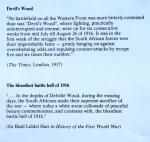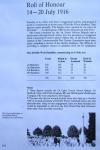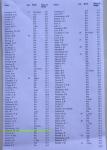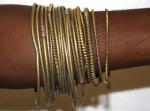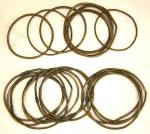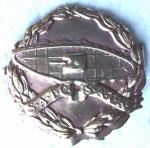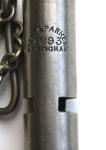-
Posts
13,225 -
Joined
-
Last visited
-
Days Won
22
Content Type
Profiles
Forums
Blogs
Gallery
Events
Store
Everything posted by Mervyn Mitton
-
Doing some research on this group, I have made the remarkable discovery of the circumstances of W.J.M. Husband's death. I was expecting that he would have been KIA in East Africa. His Star denotes service in German South West Africa, and from there many troops were sent to fight in the campaign in East Africa. Many also took discharge and made their way to UK to join-up. However, South Africa raised an expeditionary force to fight in France alongside the British and they were heavily involved in the Somme - fighting an historic action at Delville Wood. The first World War was a defining time for many of the younger Dominions - Australia; New Zealand ; Canada and South Africa. They had fought alongside Britain in the 1882 Egypt Campaign and also, the Boer War. However, nothing had prepared them for the carnage of 1914-1918. For Canada - VIMY Ridge is forever engraved in the psyche of the Nation. For Australia and New Zealand - Gallipoli and the subsequent battles and campaigns will never be forgotten. These last two two Countries lost the highest number of men - in relation to the size of their populations - then any other Country. On ANZAC Day in Australia, the old soldiers are forgiven any excesses. For South Africa - with a very small population, the battles at Delville Wood - with so many officers and men killed in just a few days were horrific. Unfortunately, with the change of Govt., the old traditions honouring the fallen have been set aside. The famous book on Delville Wood by Ian UYS lists those killed and I have re-printed some pages on the events. Husband is shown on his medal naming as a Clr. Srgt. and for the Meritorious Medal as Sgt.. In the book he is shown as a Corporal - perhaps the higher rank was for his Regt. ? He was killed on the 16th July 1916 - the day that saw the highest number killed in horrendous fighting. Verification of his place of death makes this a very special group. This is the first page of 2nd. Bn. deaths - the numbers are date KIA.
-

Zulu items
Mervyn Mitton replied to helen's topic in Great Britain: Militaria: Badges, Uniforms & Equipment
-

Zulu items
Mervyn Mitton replied to helen's topic in Great Britain: Militaria: Badges, Uniforms & Equipment
-

Zulu items
Mervyn Mitton replied to helen's topic in Great Britain: Militaria: Badges, Uniforms & Equipment
-

Zulu items
Mervyn Mitton replied to helen's topic in Great Britain: Militaria: Badges, Uniforms & Equipment
One of the problems of a tribal society - particularly in a warm climate where little clothing is worn - is how to mark the status of young unmarried girls and also, young married ones ? In the West we use finger rings to show availability - the Zulus use arm rings, woven aprons and older women as chaperones. However, nature has a way around and the Zulus also have a way of dealing with out-of-wedlock children. The matter goes before the local Chief, who imposes a fine on the man. The girl's parents will normally take on the responsibility of raising the child. The system works well in the rural areas - unfortunately so many people have moved to be nearer the cities and towns in the hopes of work. The old bride price - or, Lobola - is approx. £5000 (7500) and with few jobs and low wages , people can't afford this and just live together. Young, unmarried girls wear 20 bracelets on each arm - they are of brass and usually polished in the river sand. They are not unlike the old net curtain wires - designs vary. -

Zulu items
Mervyn Mitton replied to helen's topic in Great Britain: Militaria: Badges, Uniforms & Equipment
The adze marks show clearly on the base. I don't know the significance of the '3' inside the bowl and the lid. Sometimes these older pieces are sold 'off' in up Country local markets and the mark may have been put-on to keep them together. -

Zulu items
Mervyn Mitton replied to helen's topic in Great Britain: Militaria: Badges, Uniforms & Equipment
-

Zulu items
Mervyn Mitton replied to helen's topic in Great Britain: Militaria: Badges, Uniforms & Equipment
-

Zulu items
Mervyn Mitton replied to helen's topic in Great Britain: Militaria: Badges, Uniforms & Equipment
This is a very attractive and well carved meat platter , or dish. Sometimes a lid was carved - as in this case. Zulus eat communally and the platter with the meat is placed in the centre of the group and each person will cut off what he needs. Chiefs - or head of a Kraal - are served separately by the wives - and also, women eat apart from the men. There will usually be a bowl or, smaller platter for salt and vegs. are served separately. -

Zulu items
Mervyn Mitton replied to helen's topic in Great Britain: Militaria: Badges, Uniforms & Equipment
-

Zulu items
Mervyn Mitton replied to helen's topic in Great Britain: Militaria: Badges, Uniforms & Equipment
We haven't added to this post for a while - fortunately I have had some different things come-in - so some more Zulu. We have discussed the Zulu earrings on past threads - however, they are always different in design and materials. These are a little later in date - probably from the 1960's - shortly after this date they were discontinued as being old fashioned. These have the decoration cut from Marley floor tiles and the pieces are secured by hammering small pins through into the wood - the head of the pin is then cut off. The earlier versions used old copper gramaphone needles - which had a small rectangular head - but these must have run short. Both men and women wore these earrings and they started piercing the ear when they were children. Different size plugs of wood would continue to be inserted over the years , until they could accept this size. The problem - and probably why they were stopped, is that if the plug isn't inserted, there is a big loop of flesh hanging down. -
Well - that certainly ' puts the cats amongst the pigeons'. I think Prosper must advise his friend a.s.a.p. - hopefully it will turnout to still be the drill bit. Welcome to the Forum,Tom.
-

Mystery badge.
Mervyn Mitton replied to Gordon Williamson's topic in Great Britain: Militaria: Badges, Uniforms & Equipment
Gordon - knowing it is silver helps - my suggestion , perhaps a lapel for Staff Officer ? -
A good - interesting item - which attracted some good comments. Welcome to the Forum and I hope we hear more from you. However, don't specifically look for old shells and bombs - you might not be so lucky next time.....
-
Looking through some badges the other day, I came across this unusual brass beret badge for the South African Tank Corps. I checked up on it and was surprised to find this unit was only formed in 1940 - and even more unusual was that this badge was the first issue and dates only between May 1940 and September 1941. The Tank Corps was formed from a number of armoured car recon. units - but, surely - this late date for formation means that South Africa was one of the last of the Allies to have tanks ? The short life of the brass badge can be explained by the shortage of brass. The reason for the Tank Corps must be linked with Sth. Africa's support for Britain in North Africa. Our expeditionary Force drove right from Capetown - across Africa, via Kenya and the 30,000 men fought 250,000 Italians - who retreated. However, it must be understood that few Italian troops really supported the fascists. I hope some members with more knowledge on tank units will be able to contribute - for example - what tanks did they first have ?
-
Peter - to answer your question - I haven't got a clue ..... Ages since I've looked at it - will have someone take some close-up photos.
-

What's the difference in these two?
Mervyn Mitton replied to speagle's topic in Police Forces of the World
O.K..... I'm probably being silly - but on the top of the arms is it a) a Bear 2) an elephant 3) a Beaver ? -
Chris - you could well be right - however, it does look like a drive band around the head ?
-
William's post of the old - and rare - Boer War jacket, reminded me that I had this whistle. I have posted it separately in order not to break his thread. Stamped with the Broad Arrow , this particlar one was issued to prison guards at Boer Prisoner of War camps. Particularly, in Capetown. The stamped number was probably for that special purpose and they could have a record of issue. Identical to the Police whistles of that time, the top of the ring has a flattening. The chain is also identical to Police.The whistle was supplied to the Army by the Metropolitan Police Armourers - Parker's. Original date of issue 1893. Could it have been originally for the Police and then re-issued for the War ?
-

Ribbon Bar with two BWM ?
Mervyn Mitton replied to christerd's topic in Great Britain: Orders, Gallantry, Campaign Medals
Hi - Brian - the medal was often duplicated for having served in different units. Sometimes with different bars - but that wasn't common - just that two units had submitted applications.



